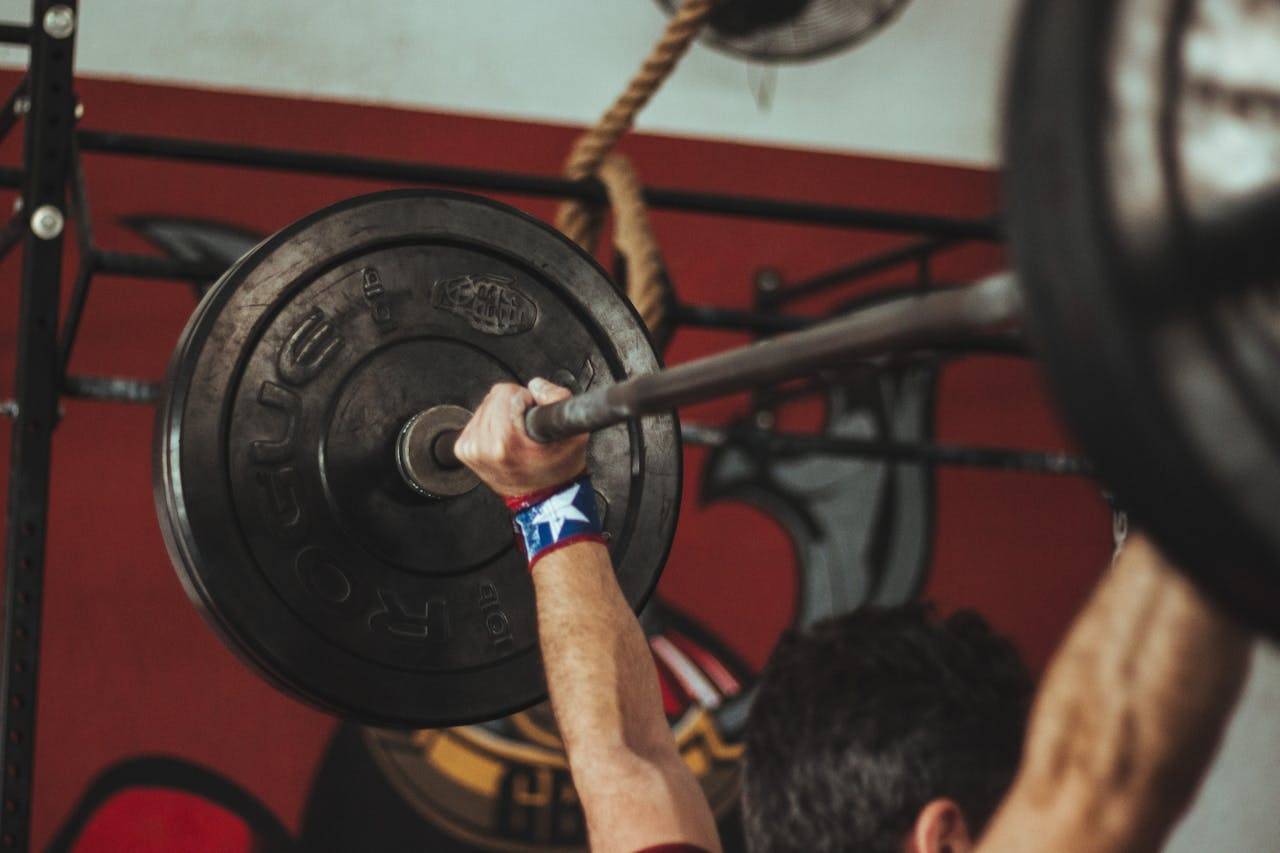
Table of Contents
What is Powerlifting?
- Objective: The primary goal in powerlifting is to achieve the highest combined total weight lifted across the squat, bench press, and deadlift. Competitors aim to maximize their one-rep max (1RM) in each of these lifts.
- Lifts:
– Squat: A full squat movement where the lifter must descend until the top of the thighs are parallel or below parallel with the ground, then return to a standing position.
– Bench Press: The lifter lies on a bench and lowers a barbell to their chest, pauses, and then presses the weight back up to arms’ length.
– Deadlift: The lifter must grip a barbell on the floor and lift it to a standing position, with the shoulders back and knees locked out. - Competition Format: In a powerlifting meet, each lifter gets three attempts at each of the three lifts. The highest successful lift in each discipline is recorded, and the combined total of the best squat, bench press, and deadlift determines the final result.
- Weight Classes: Powerlifting competitions are divided into weight classes, allowing lifters of different body weights to compete against each other fairly.
- Equipment: Powerlifters often use specialized equipment such as weight belts, knee sleeves, and wrist wraps to provide support and stability during heavy lifts.
- Training: Powerlifting training typically involves periodized programs focused on building maximum strength through progressive overload, using compound exercises and various intensity techniques.
History of Powerlifting
What is Weightlifting?
Weightlifting, also known as Olympic weightlifting, is a strength sport that involves two specific lifts: the snatch and the clean and jerk. The objective is to lift the heaviest weight possible in each lift with proper technique, speed, and power. Weightlifting competitions are also divided into weight classes and age groups, and athletes are given three attempts in each lift to achieve their highest total.
- Objective: The primary goal in weightlifting is to lift the heaviest weight possible in the snatch and the clean and jerk. Competitors aim to maximize their one-rep max (1RM) in each of these lifts.
- Lifts:
– Snatch: The lifter must pull the barbell from the floor to an overhead position in a continuous motion, receiving the weight with straight arms and legs.
– Clean and Jerk: This lift consists of two movements. First, the lifter must pull the barbell from the floor and catch it across the front of the shoulders (the “clean”). Then, the lifter must bend the knees and explosively drive the weight overhead with straight arms (the “jerk”). - Competition Format: In a weightlifting competition, each lifter gets three attempts at the snatch and three attempts at the clean and jerk. The highest successful lift in each discipline is recorded, and the combined total of the best snatch and best clean and jerk determines the final result.
- Weight Classes: Similar to powerlifting, weightlifting competitions are divided into weight classes, allowing lifters of different body weights to compete against each other fairly.
- Equipment: Weightlifters use specialized shoes with raised heels, along with chalk, wrist wraps, and other supportive gear during training and competition.
- Training: Weightlifting training involves mastering the highly technical snatch and clean and jerk movements, as well as developing explosive strength, flexibility, and overall athleticism through a variety of exercises and methods.
Weightlifting training focuses on developing explosive power, speed, and technical proficiency in the snatch and clean and jerk lifts. Weightlifting requires a unique combination of strength, speed, power, flexibility, and precise technique. It is a true test of overall athleticism and explosive capability. The sport has a rich history, being one of the oldest disciplines in the Olympic Games, and has a dedicated global community of athletes and coaches.
History of Weightlifting
What are the limitations of Powerlifting?
While powerlifting is a popular and effective strength sport, it does have some limitations and potential drawbacks to consider:
- Limited movement patterns: Powerlifting training and competition are focused on three specific lifts: the squat, bench press, and deadlift. This narrow range of movement patterns can lead to muscular imbalances and potential overuse injuries if proper programming and accessory work are not incorporated.
- Extreme stress on the body: The heavy loads and high levels of tension involved in powerlifting can put tremendous stress on the joints, connective tissues, and central nervous system. Proper periodization, recovery protocols, and injury prevention measures are crucial to mitigate these risks.
- Weight class restrictions: Powerlifters compete within specific weight classes, which can encourage unhealthy weight-cutting practices or discourage muscle growth beyond a certain point to avoid moving up a weight class.
- Specialized equipment dependence: The use of specialized equipment like bench shirts, squat suits, and knee wraps in some powerlifting federations can create a disconnect between the lifter’s true strength and the weight lifted, as well as raise accessibility and cost barriers.
- Potential for form breakdown: As weights increase, maintaining proper form and technique can become increasingly challenging, leading to potential injury risks if not properly managed.
- Limited cardiovascular demand: While powerlifting requires immense strength and mental fortitude, it does not provide significant cardiovascular conditioning, which is important for overall health and fitness.
- Narrow focus on strength: Powerlifting’s primary emphasis is on maximizing strength in the three lifts, potentially neglecting other important aspects of fitness, such as flexibility, agility, and overall athletic performance.
What are the limitations of Weightlifting?
1. Highly technical and skill-dependent: The snatch and clean and jerk lifts require extremely precise technique and coordination. Mastering these movements can take years of dedicated practice, which can be a barrier for some athletes or recreational lifters.
2. Injury risks: The explosive nature of weightlifting movements, coupled with the heavy loads involved, can put significant stress on the joints, muscles, and connective tissues. Improper technique or overtraining can lead to injuries, particularly in the shoulders, lower back, and knees.
3. Limited transfer to other sports: While weightlifting develops exceptional strength and power, the specific movement patterns may not directly translate to the demands of other sports or athletic endeavors.
4. Specialized equipment needs: Weightlifting requires access to specialized equipment, such as Olympic weightlifting bars, bumper plates, and weightlifting platforms. This equipment can be expensive and may not be readily available in all gym facilities.
5. Narrow focus on two lifts: While the snatch and clean and jerk are incredibly demanding exercises, weightlifting training primarily revolves around these two lifts, potentially neglecting other important aspects of physical development.
6. Lower strength levels compared to powerlifting: Due to the technical demands and emphasis on speed and power, weightlifters may not develop absolute maximum strength levels comparable to powerlifters who focus solely on moving the heaviest weights.
7. Limited accessibility for some populations: The explosive and dynamic nature of weightlifting movements may not be suitable or recommended for certain populations, such as those with preexisting injuries or mobility limitations.
It’s important to note that many of these limitations can be mitigated through proper coaching, programming, and a well-rounded approach to training and injury prevention. Additionally, weightlifting is not necessarily meant to be a comprehensive fitness program but rather a specialized pursuit of explosive strength and power through the snatch and clean and jerk lifts.
Famous Powerlifters and Weightlifters
Powerlifters
-
Ed Coan: Often considered the greatest powerlifter of all time, Ed Coan set numerous world records in the 220 lb weight class and was the first person to total over 2,400 lbs in competition.
-
Jesse Marunde: Jesse was a popular powerlifter and bodybuilder known for his impressive strength and physique. He held multiple world records in the squat and deadlift before his untimely passing.
-
Stan Efferding: Also known as “The White Rhino,” Stan Efferding is a world-record holding powerlifter who has also competed in bodybuilding and strongman competitions.
-
Billy Gunn: Billy Gunn is a former professional wrestler who also had a successful career in powerlifting, winning multiple championships and setting several world records.
Weightlifters
- Naim Süleymanoğlu: Often considered the greatest weightlifter of all time, Naim Süleymanoğlu is a Turkish weightlifter who won three Olympic gold medals and set multiple world records.
- Pyrros Dimas: Pyrros Dimas is a Greek weightlifter who won three Olympic gold medals and one bronze medal. He is known for his longevity in the sport, having competed in four consecutive Olympics.
- Lü Xiaojun: Lü Xiaojun is a Chinese weightlifter who has won two Olympic gold medals and set multiple world records in the 77 kg weight class.
- Kendrick Farris: Kendrick Farris is an American weightlifter who competed in the 2008, 2012, and 2016 Olympics. He is the first American male to medal in weightlifting since 1984, winning a bronze medal at the 2016 Rio Olympics.



